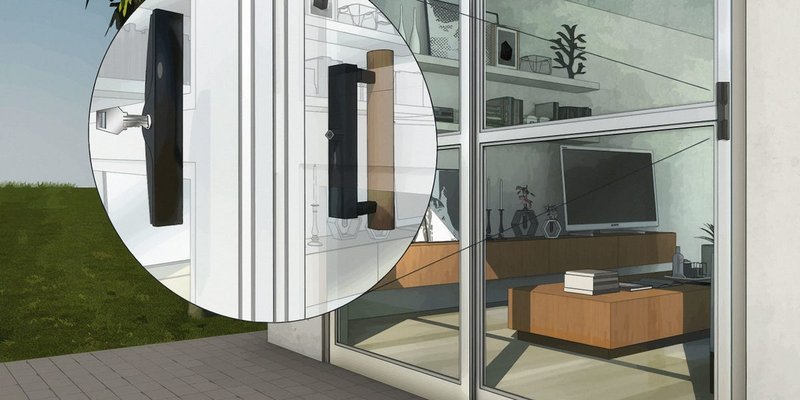
Picture this: your sliding door is the gateway between your cozy home and the outside world. A sturdy lock can be compared to a good bouncer at a nightclub—ensuring that everyone who enters is supposed to be there. A popular brand many people go for is the Baldwin Surface-Mounted Lock. Its reliability and ease of use make it a great choice for anyone looking to boost their sliding door security. Let’s dive into how you can install this lock yourself, step by step.
Gather Your Tools and Materials
Before jumping into the installation process, you need to gather everything you’ll need. This isn’t just about having a screwdriver. You should have:
- Surface-mounted sliding door lock kit
- A drill with appropriate drill bits
- Measuring tape
- Pencil or marker
- Level
- Safety glasses
Having all these tools ready will make your job much smoother. Trust me; there’s nothing worse than getting halfway through a project and realizing you’re missing a crucial part. Using safety glasses is particularly important. You’d be surprised how a simple drilling mistake can lead to flying debris!
Understanding the Lock Parts
Now that you have your tools, let’s take a moment to understand the components of the lock itself. A typical surface-mounted sliding door lock consists of:
- The main lock body
- The key cylinder
- A strike plate
- Mounting screws
The main lock body is what you’ll be securing onto the door frame. The key cylinder is where you’ll insert your key, and the strike plate is what will be fixed into the door frame to catch the locking bolt. Understanding these parts is crucial—as they each play a vital role in the functionality of the lock.
Preparing the Sliding Door for Installation
Before you dive into the installation, ensure your sliding door is ready. First, clean the area around where you’ll install the lock. Dust or dirt can affect how well the lock will fit and function.
Next, measure the height at which you want the lock installed. It’s usually installed about 36 inches from the ground—this is a comfortable height for most people. Use your measuring tape and pencil to mark this spot on the door frame. A level can help ensure that your lock is installed straight, preventing any potential issues later.
Marking and Drilling Holes
With your measurements marked, it’s time to get drilling. Hold the lock body against the marked spot and use the pencil to mark where the screws will go. This step is crucial—if you don’t align it correctly, your lock won’t function properly.
Here’s the thing: always double-check your measurements before drilling. You might think, “Oh, I can just fix it later,” but that often leads to more work. Once your markings are in place, take the drill and carefully create holes for your mounting screws. Make sure to wear your safety glasses during this step to protect your eyes from any debris.
Installing the Lock Body
Now for the fun part: installing the lock body. Position the lock body over the holes you’ve created and align it with your pencil marks. Start by inserting the screws into the holes, securing the lock body to the door frame.
Use your screwdriver to tighten the screws, but don’t overtighten. You want the lock to be snug, but forcing it can strip the screw holes or damage the door frame. After securing the lock, check if it’s level one last time.
Installing the Strike Plate
With the lock body in place, it’s time to install the strike plate. This piece usually goes on the door frame where the lock will engage. Align the strike plate with the lock’s bolt. Use the pencil to mark where the screws will go.
Just like before, drill holes for the screws, making sure they are aligned correctly. Then, attach the strike plate using your screwdriver. This piece is vital for the lock’s security, so pay close attention to its placement. If it’s too high or low, the lock won’t secure properly.
Testing Your New Lock
Once everything is installed, it’s time for the moment of truth! Test the lock by inserting the key and turning it. Make sure the locking mechanism engages with the strike plate smoothly. If it feels rough, you may need to adjust the strike plate or recheck your alignment.
It’s also wise to test the lock several times to ensure reliability. Sometimes, a little adjustment here and there can make a significant difference. Remember, you want to have confidence that your new lock is doing its job.
Troubleshooting Common Issues
If you encounter any problems while using your new lock, here are some common issues and solutions:
- Lock won’t turn: Check if the strike plate is misaligned. Adjust it if necessary.
- Key sticking: Lubricate the keyhole with graphite spray or a silicone-based lubricant.
- Loose lock body: Tighten the mounting screws but avoid overtightening.
If these quick fixes don’t resolve your issue, consulting the manufacturer’s instructions or contacting customer support might be the best route. They can often provide valuable insights based on your specific model.
Enjoying Your Secure Sliding Door
Congratulations! You’ve successfully installed a surface-mounted sliding door lock. Not only have you improved your home’s security, but you’ve also learned valuable DIY skills. By taking on this project, you’ve made your home safer while gaining confidence in your handyman abilities.
Whether you’re taking a break from home improvement or planning your next project, remember that a little effort goes a long way in keeping your home secure. Enjoy the peace of mind that comes with knowing your sliding door is locked up tight!